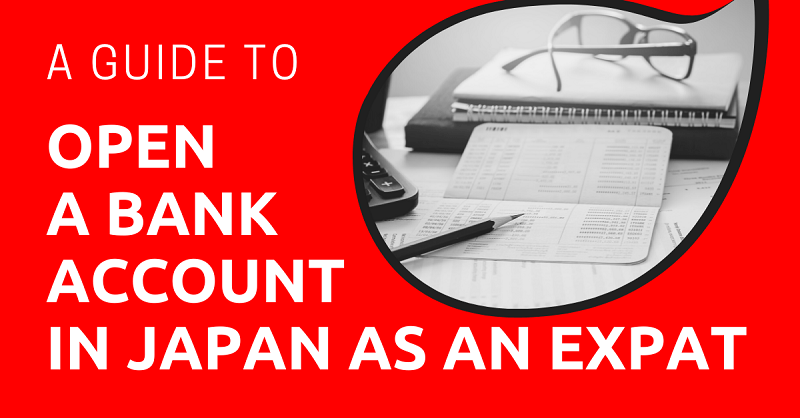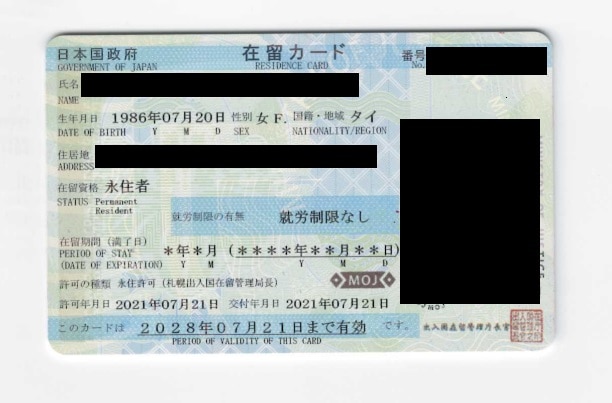
When I first arrived in Japan, it was an overwhelming experience. I had prepared a checklist of tasks to complete after meeting my supervisor at the airport, but I was unprepared for the language barrier and the intricacies of settling in. Remember, this was 13 years ago, and today, life has become much more convenient for foreigners residing here.
I’ve put together a comprehensive guide on an essential aspect of settling in Japan: opening a bank account. While it isn’t rocket science and doesn’t demand any specific skills, I hope this guide smoothens your experience. I’ll also share some insider tips to make the process hassle-free.
This article will take approximately 13 minutes to read. Don't have the time right now? No worries. You can email the ad-free version of the article to yourself and read it later!
Disclaimer: This article may include links to products or services offered by ExpatDen’s partners, which give us commissions when you click on them. Although this may influence how they appear in the text, we only recommend solutions that we would use in your situation. Read more in our Advertising Disclosure.
Contents
- Good to Know
- Which Bank to Choose?
- Required Paperwork
- Initial Deposit
- Basic Conversation for Opening a Bank Account in Japan
- Waiting for Approval
- ATM Card and Tsuuchou
- What You Can Do with Your Account
- Mobile Banking Options
- Maintenance Fees
- Banking Hours
- Withdrawing Money with a Foreign Card in Japan
- Now, on to You
Good to Know
While Japan’s banking system is as robust and efficient as those in other developed nations, it can appear confusing to newcomers due to linguistic challenges and cultural intricacies.
Japan has an eclectic mix of megabanks, digital banks, and regional banks.
City banks, often referred to as ‘megabanks’, are prevalent in major urban areas with numerous branches and ATMs.
Regional banks, as the name indicates, are location-specific, usually at the prefectural level. Your employer might have a tie-up with a regional bank and may suggest you open an account there, but remember, this is entirely optional.
Which Bank to Choose?
Choosing the right bank is crucial, but remember you can open multiple accounts. If you’re unsatisfied with your bank’s service, it’s relatively easy to switch. The following banks offer services in English and cater well to international customers.
Before finalizing, check with your employer to see if they have a preferred bank for direct deposits.
Here’s a brief guide:
Japan Post Bank

It’s among Japan’s largest banks with widespread branches and ATMs. A highlight is its dual function as a post office.
You can complete banking and shipping tasks under one roof. The bank also lets you fill out an account application online, which can be printed and presented in-person.
Shinsei Bank

Known for English services and extensive mobile banking. Interestingly, a personal seal isn’t needed to open an account.
But be prepared for a bit of a learning curve with their mobile platform due to the complexity of Japanese web design.
Sony Bank

It’s primarily an online bank with English services.
The account opening process is straightforward. The downside is the lack of physical branches, which might be inconvenient if you encounter issues with your account.
Other
Other banks like SMBC Trust Bank, Mitsubishi UFJ Bank, Mizuho Bank, and Seven Bank (7-11 bank) also have English support.
Of these, 7-11 stands out for its ATM convenience, allowing withdrawals from any 7-11 across Japan without fees.
Required Paperwork
To open a bank account in Japan, you’ll need the following documents.
Most banks require a combination of, if not all, the essential paperwork listed below: your Residence Card (Zairyu Card), your passport, proof of address, a hanko/inkan (personal seal/stamp with your full name on it), and something that often posed a significant challenge for newly arriving foreigners: a registered Japanese mobile number.
Additionally, gather your employment or student information as a precautionary measure. This can be a written statement from your company or a student ID card if you’re enrolled in a college/university.
It’s worth noting that some banks may require students to wait more than six months, depending on the bank chosen.
Consult the bank’s website for detailed instructions on required documents as there might be slight differences between banks.
I’ll suggest some foreigner-friendly banks later in this article, including my personal favorite.
Residence Card (Zairyu Card)
It serves as proof of your residential status in Japan and displays your visa expiration date. As of 2023, Japanese banks mark the expiration date of your residential status in their systems.

They might ask for a minor paperwork update (usually visiting the bank with your renewed visa card) to continue serving you. This wasn’t always the case; the update was introduced to combat money laundering. You can obtain your residence card from the immigration office.
Sometimes, your new Japanese employer will gather your personal details and photo in advance, preparing and registering the card for you prior to your arrival.
Remember, this card is crucial for most activities in Japan. There’s also a “My Number” card—a tax ID card with insurance details. However, applying for this card is optional, with many Japanese citizens forgoing it.
Passport
Ensure your passport is renewed before coming to Japan. An expiring passport while you’re in the country can lead to inconvenience.
Proof of Address
A document such as a “jumin-hyo” from your local municipal office or a utility bill will suffice. If your employer or educational institution is providing accommodation, they can also provide proof of residence.
Japanese Phone Number
This is essential for bank communication. You can get a local number from telecom companies like Softbank, NTT Docomo, or AU. Many foreigners opt for a temporary solution like a prepaid SIM card or a virtual phone number from providers like Mobal, Callhippo, Krispcall, and Didww.
Note that tourists can’t legally obtain a phone number that allows voice calls in Japan. Since you won’t be on a tourist visa, this won’t be a concern. Many newcomers secure a virtual number before arriving in Japan, but these might not always be accepted for service verification. Research and pick a solution that suits your needs.
Hanko/Inkan
This personal seal with your name written in katakana is often used in place of handwritten signatures on formal documents. They can be bought from specialized stores. If your name isn’t common in Japan, you’ll need to visit a store that provides engraving services. While there are hanko vending machines available, they’re less common nowadays.
Initial Deposit
Be aware that some banks may require a minimum deposit to initiate an account. The amount varies; some banks may ask for as little as 1,000 yen, while others might have no such requirement.
Basic Conversation for Opening a Bank Account in Japan
Here’s a basic conversation that could occur when opening a bank account in Japan.
Please understand that this is a simplified example, and actual interactions might vary. If you are outside major cities like Tokyo, finding an English-speaking bank representative might be rare. So, it’s best to learn Japanese while living in Japan.
Customer: Sumimasen, ginkō koza o hirakitai desu. (Excuse me, I want to open a bank account.)
Bank Teller: Hai, wakarimashita. Hitsuyōna shōmei-sho wa motte imasu ka? (Yes, understood. Do you have the necessary documents?)
Customer: Hai, pasupōto, zairyū kādo, jūsho shōmei, denwa bangō, hanko, shokugyō jōtai, koza mōshikomisho, wo mottekimashita. (Yes, I’ve brought my passport, residence card, proof of address, local phone number, personal seal, employment status, account application form, deposit money, ATM card, and PIN number.)
Bank Teller: Mōshikomi-sho ni hitsuyōna jōhō o kinyū shite kudasai. (Please fill in the required information on the application form.) *It’s advisable to have filled this out online beforehand if possible.
Bank Teller: Donna kouza wo hirakitai desu ka? Futsuu yokin ka, tosho yokin ka? (Which type of account would you like to open? A regular savings account or a time deposit account?) *You should opt for a ‘futsuu’ account.
Bank Teller: Arigatō gozaimasu. Shinsa ga owaru made, shibaraku omachi kudasai. (Thank you. Please wait a moment until the review is completed.)
This basic conversation provides a fundamental understanding. It’s beneficial to note some phrases or sentences in Japanese on your phone to help you at the counter. If you have special requests, consider copying and pasting the Japanese text for the teller to read.
If you’re not fluent in Japanese, consider seeking help from a Japanese friend or co-worker for the call.
Waiting for Approval
It’s common to wait for 1-2 hours for your account to be approved, depending on the bank.
A good approach is to call in advance and inform them of your intention to open an account. While this doesn’t secure a reservation, it helps in ensuring the process is more streamlined.
The time required to open a bank account can vary based on the bank’s location and its familiarity with serving foreigners.
ATM Card and Tsuuchou
After you can open an account, you’ll receive an ATM card and a “tsuuchou” – a small registry book.
This booklet allows you to deposit, withdraw, transfer funds, and maintain a written record of all transactions.
Though mobile banking has reduced its usage, it’s a useful backup if your ATM card goes missing.
Safeguard your tsuuchou and periodically update it to monitor your finances.
Always verify this with your chosen bank.
What You Can Do with Your Account
Upon successfully opening your bank account, you can benefit from a unique system in Japan called “furikomi”.
It lets you send money and link all your bills (gas, electric, water, rent) to your account.

Payments are then automatically made on specific dates. Keeping track of these dates is crucial to manage your finances efficiently.
Typically, salary payments in Japan are made once a month, either on the 10th or the 20th. It will be sent directly to your bank account.
Mobile Banking Options
Most banks offer mobile banking apps.
However, due to anti-money laundering regulations and cybersecurity measures, using mobile banking can sometimes be more tedious than in-person transactions.
Some banks use the SWIFT system for international remittances, but not all. Your experience might also vary based on your home country. Many foreigners connect their accounts to platforms like Wise to handle currency exchanges more effectively.
Maintenance Fees
Generally, there are no maintenance fees for bank accounts in Japan, unlike some countries like the U.S.
Banking Hours
Banks typically operate from 9 a.m. to 3-5 p.m., Monday through Friday. Contrary to many countries, bank ATMs in Japan aren’t accessible 24/7. They usually shut down shortly after the bank’s official closing time. For instance, the Post Office Bank ATMs stay open approximately one hour post-closing.
For after-hours withdrawals from your Japanese account, supermarket or convenience store ATMs are available, but they often charge a fee.
A surprising aspect for many foreigners is that Japanese banks observe extended closures during certain times of the year. Notably, these periods include ‘Golden Week’ in late April to early May, ‘Obon’ in mid-August, and the ‘New Year’s Holidays’ spanning late December to early January. It’s crucial to mark these dates and plan any bill payments or major withdrawals accordingly.
Withdrawing Money with a Foreign Card in Japan
If you need to withdraw money using a foreign bank card, convenience stores are your best bet, though some bank ATMs also allow this. Both Family Mart and 7-11 have reasonable withdrawal fees of 100 yen to 220 yen and are compatible with most Visa/Mastercard debit cards.
A quick note of caution: Before using your foreign card in Japan, inform your bank to ensure it isn’t flagged as stolen or suspicious when used here. I made this oversight once, and it was quite the ordeal.
If your card gets flagged and deactivated, receiving a replacement can be a lengthy process, particularly if your bank doesn’t ship directly to Japan.
Now, on to You
Setting up as a new international resident in Japan becomes less intimidating when you’re well-prepared. This guide aimed to provide tips to navigate the account opening process with ease. Staying organized and being proactive are crucial. Best of luck with your new account and your adventures in Japan!







